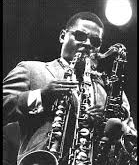 SOUNDTRACK: TANYA TAGAQ-Toothsayer EP (2019).
SOUNDTRACK: TANYA TAGAQ-Toothsayer EP (2019).
 Earlier this year, Tanya Tagaq released a five-song EP to accompany the British National Maritime Museum’s “Polar Worlds” exhibit.
Earlier this year, Tanya Tagaq released a five-song EP to accompany the British National Maritime Museum’s “Polar Worlds” exhibit.
Tagaq’s music doesn’t radially change from release to release but she does vary things quite a bit within the style she creates.
This album feel more electronic than organic. It’s full of drones and pulsing sounds.
“Icebreaker” opens with a low rumbling drone joined by a pulsing drum beat. Then her heavy breathing/growling enters and she moved between guttural throat singing and high squeals. A vocal melody appears around 2 and a half minutes but it is quickly swallowed by the main pulsing rhythm.
Tagaq uses katajjaq which Pitchfork explains is the vocal game traditionally played among Inuit women while men are away hunting. It involves two women standing face to face, exchanging repetitive vocal motifs until one fails to keep the pattern going. In older recordings of katajjaq, it’s easy to sense just how entertaining they were: Many games end with laughter.
When Tagaq does katajjaq she is solo (and not laughing).
“Snowblind” is next. with slow pulsing synths (from the Iranian-British electronic musician Ash Koosha) and a delicate piano as she sings a gentle wordless melody. The piano starts to pick up half way through and the low note grow more ominous as her voice grows more urgent.
“Toothsayer” features guttural breathing underneath while her voice soars above. Midway through, it resolves into some gentle voices and an harsh stabbing guitar solo.
The most exciting track to me is “Submerged,” her katajjaq is delivered over what sounds like Inuit drumming, but Inuit drumming underwater–echoing and slightly underwater sounding. Deep, slow clicking and heavy gasping breaths make up most of the song until about three minuets when a chord comes crashing in and her voice soars like a scream. The pulsing continues and her voice sounds more ragged. As it reaches its climax so does her voice shrieking louder and higher louder and higher until it abruptly ends.
The disc ends with the prettiest song, “Hypothermia.” It is a quieter song, awash with keyboards. Her voice soars like a siren. Like the feeling of hypothermia, you are lulled by beauty when really your body is shutting down.
In “Hypothermia,” her katajjaq takes on the desperate cadence of someone panting, while the crystalline harmonies of “Snowblind” are both a vivid evocation of landscape and a bittersweet expression of pain—the pain of knowing that this could all be gone.
[READ: December 30, 2019] “I Can Speak!™”
The end of the year issue is called the Cartoon Takeover: A Semi-Archival Issue. So there’s a lot of cartoons, but there’s also some old stories. Like this one.
This was originally published in the January 14, 1999 issue of the New Yorker. I’ve now read it a few times, but it has been a while and I enjoyed it more this time than any other time.
The story is actually a letter to a customer unsatisfied with her I Can Speak!™. The customer service rep from KidLuv says he is on his lunch break–that’s how much he cares about her satisfaction. (more…)





 I had never heard of Rahsaan Roland Kirk before reading this story. This surprises me since i rather like avant garde jazz. I looked him up and was blown away by
I had never heard of Rahsaan Roland Kirk before reading this story. This surprises me since i rather like avant garde jazz. I looked him up and was blown away by 





